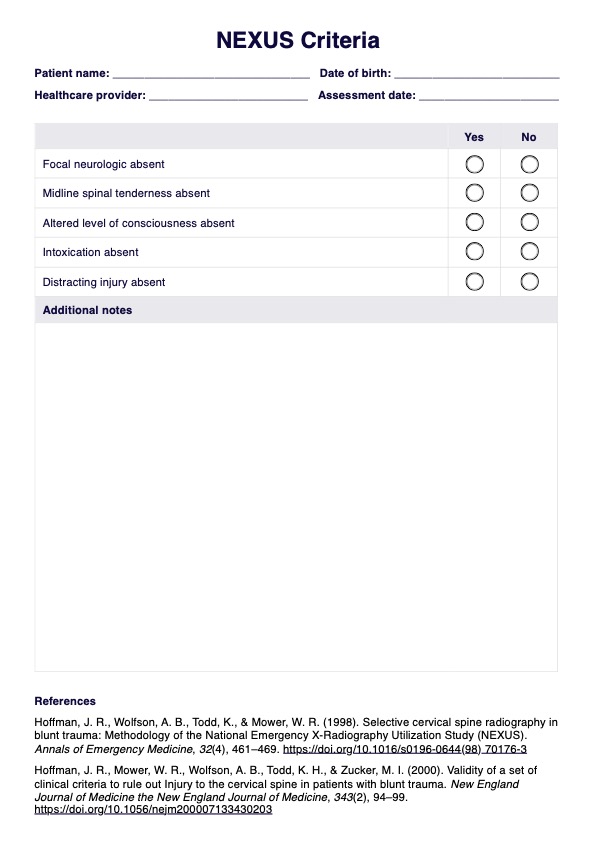The mnemonic is NSAID: N for neuro deficit, S for spinal tenderness, A for altered mental status, I for intoxication, and D for distracting injury.

NEXUS Criteria
Determine if cervical spine imaging is necessary when assessing your trauma patients with the NEXUS Criteria. Get a free PDF here.
Use Template
NEXUS Criteria Template
Commonly asked questions
NEXUS or National Emergency X-Radiography Utilization Study is the criterion used to decide which patients don't need cervical spine imaging.
Using the NEXUS Criteria on patients older than 65 years old may not produce reliable results.
EHR and practice management software
Get started for free
*No credit card required
Free
$0/usd
Unlimited clients
Telehealth
1GB of storage
Client portal text
Automated billing and online payments











